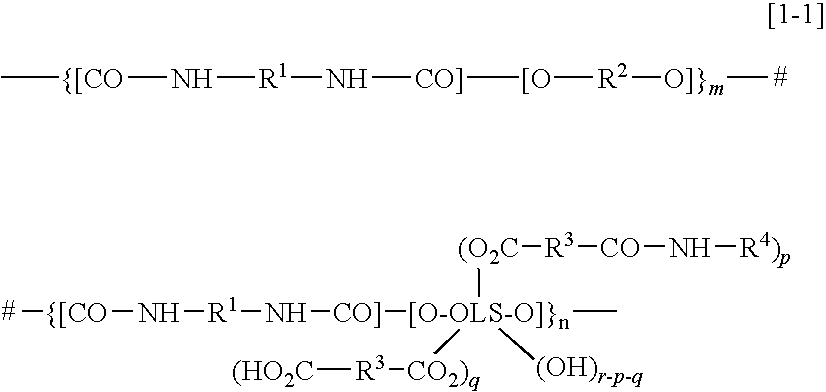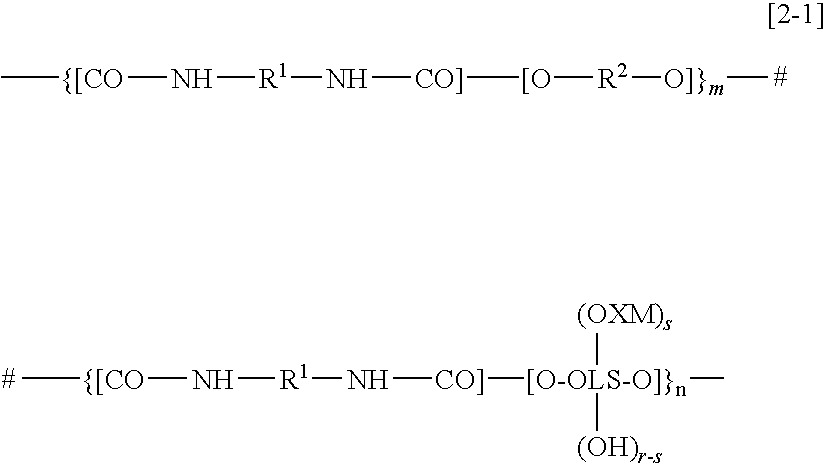Separating material and method for collecting cell or the like using the same
a technology of material and cell, applied in the field of separation material and method for collecting cell or the like using the same, can solve the problems of high cost, long cell treatment time, and complex operation, and achieve the effects of convenient and low cost production method, convenient and efficient harvesting method, and superior film forming capability
- Summary
- Abstract
- Description
- Claims
- Application Information
AI Technical Summary
Benefits of technology
Problems solved by technology
Method used
Image
Examples
example a
Harvesting Method of Monocyte and Preparation Method of Dendritic Cell
[0203]The present invention is explained in more detail by referring to the following Examples, which are not to be construed as limitative.
example a1
(1) Preparation of Cell Isolation Material
[0204]A mannobiose-bound polystyrene derivative (Poly[N-p-vinylbenzyl-O-β-D-mannopyranosyl-(1→4)-D-mannamide], manufactured by SEIKAGAKU CORPORATION) was dissolved in distilled water at a concentration of 0.1% (W / V). The solution (1 ml) was added to a commercially available 1 ml polystyrene petri dish (diameter 35 mm), and left standing at room temperature for about 1 hr. Then, the supernatant polymer was removed, and saline (1 ml) was added. Excess mannobiose-bound polystyrene derivative was washed, and the supernatant was removed. This operation was repeated 3 times to give a mannobiose-bound polystyrene derivative coated petri dish.
(2) Isolation of Monocyte
[0205]A winged injection needle was punctured into an upper arm of a healthy subject, and the blood (about 7.5 ml) was drawn in a lymphocyte isolation tube (vacutainer tube, manufactured by Becton, Dickinson and Company). After blood sampling, 3.8% citric acid solution was added to the ...
example a2
[0209]In the same manner as in Example A1 except that a lactose-bound polystyrene derivative (nonreducing terminal sugar is galactose, manufactured by SEIKAGAKU CORPORATION) was used instead of the mannobiose-bound polystyrene derivative, the recovery rate and purity of the monocyte were measured. As a result, the recovery rate of monocyte was 81% and the purity thereof was 73%, and the monocyte was found to have been selectively isolated and collected.
PUM
| Property | Measurement | Unit |
|---|---|---|
| Time | aaaaa | aaaaa |
| Mass | aaaaa | aaaaa |
| Fraction | aaaaa | aaaaa |
Abstract
Description
Claims
Application Information
 Login to View More
Login to View More - R&D
- Intellectual Property
- Life Sciences
- Materials
- Tech Scout
- Unparalleled Data Quality
- Higher Quality Content
- 60% Fewer Hallucinations
Browse by: Latest US Patents, China's latest patents, Technical Efficacy Thesaurus, Application Domain, Technology Topic, Popular Technical Reports.
© 2025 PatSnap. All rights reserved.Legal|Privacy policy|Modern Slavery Act Transparency Statement|Sitemap|About US| Contact US: help@patsnap.com



